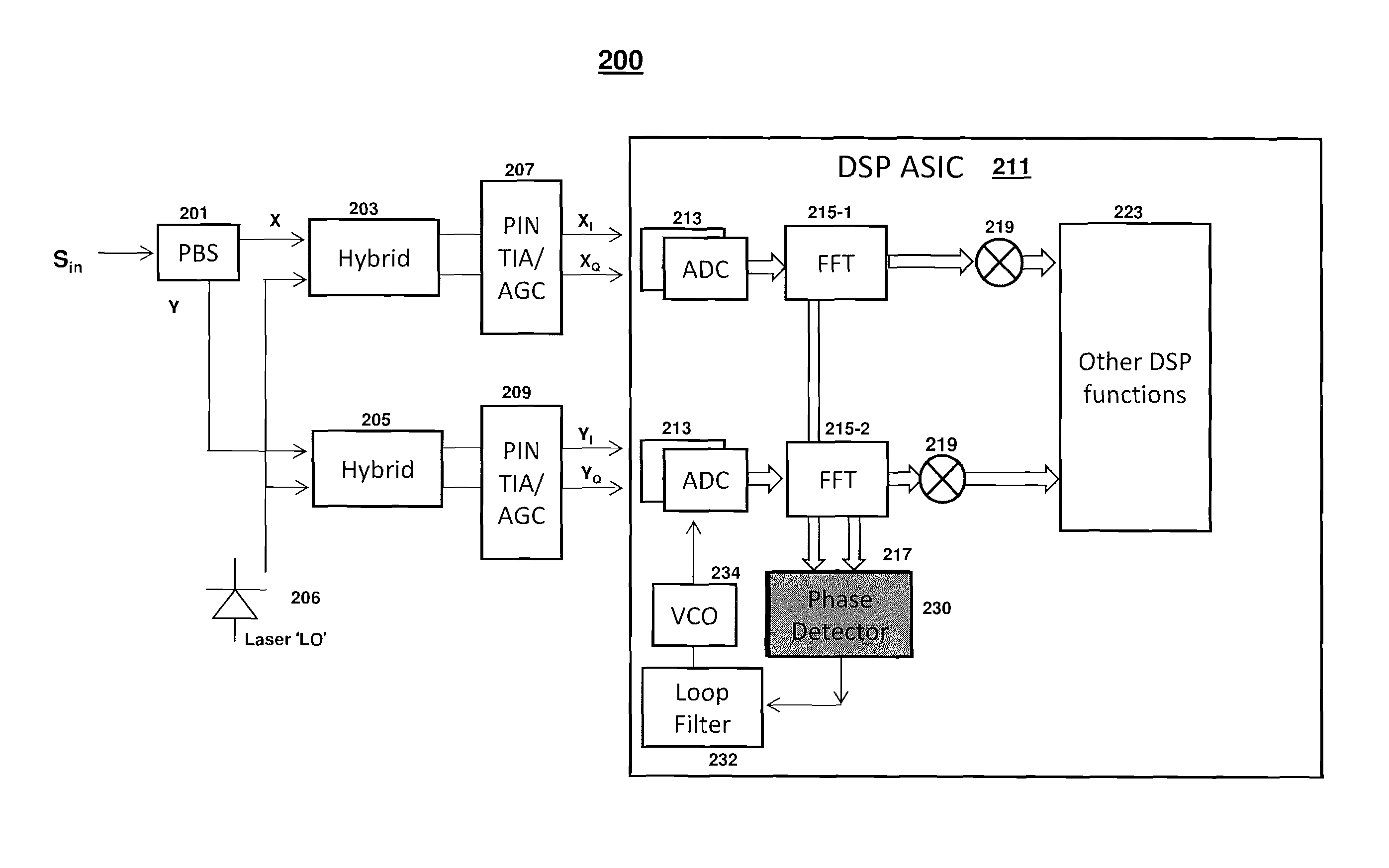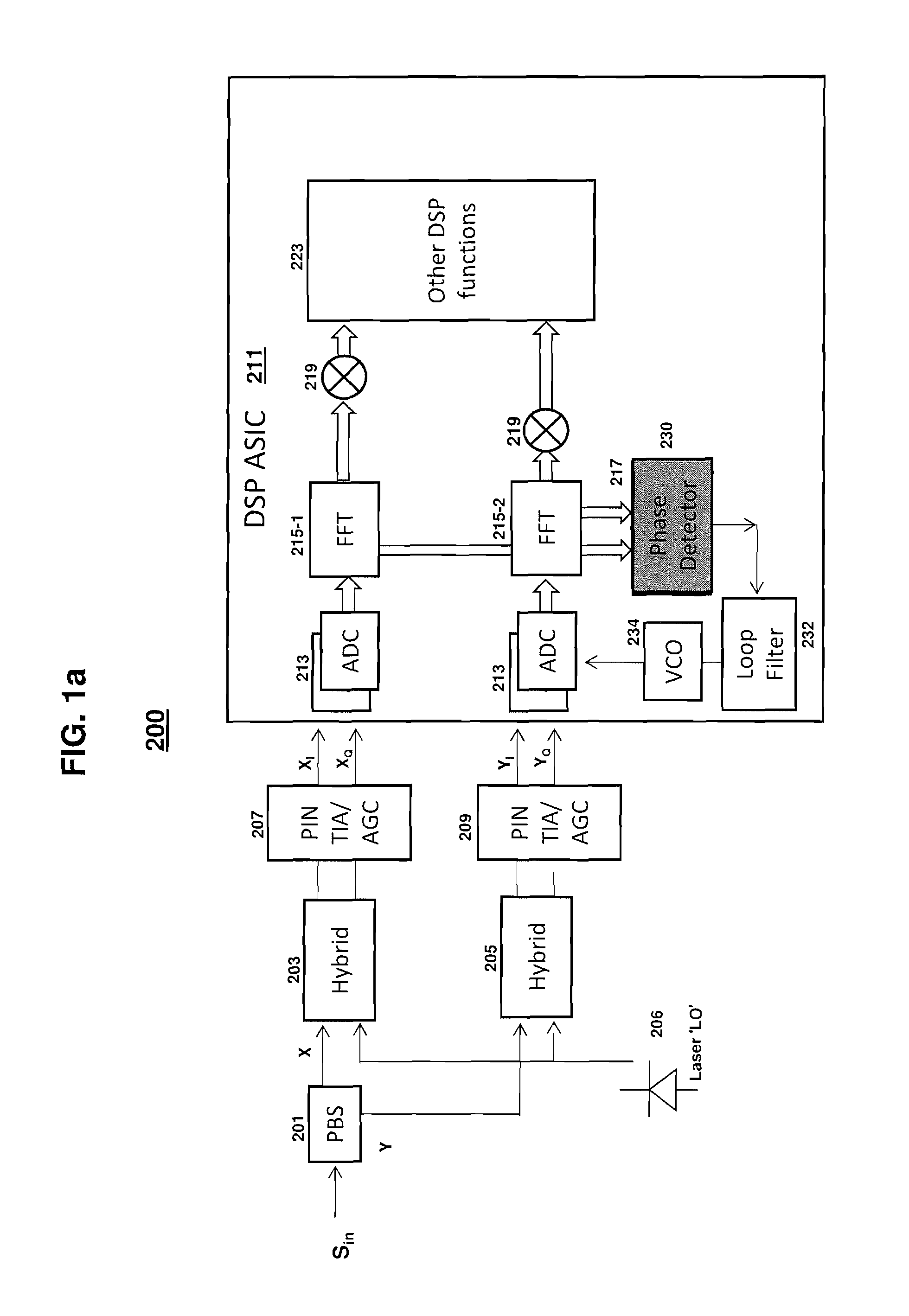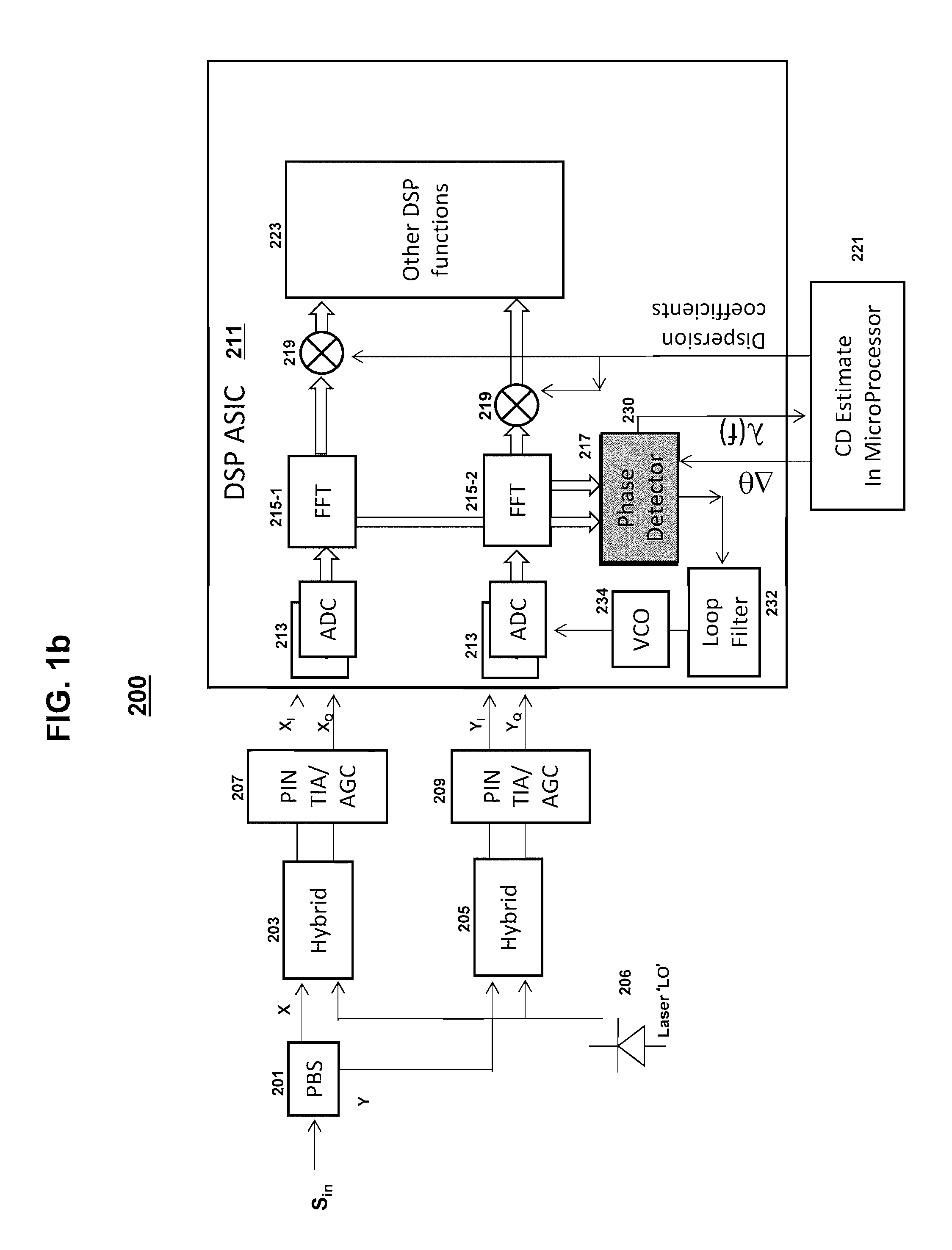PMD and chromatic dispersion tolerant clock recovery
a clock recovery and chromatic dispersion technology, applied in the field of optical communication systems, can solve the problems of adverse effects, impairment and distortion of received signals, and reliable and efficient clock phase recovery
- Summary
- Abstract
- Description
- Claims
- Application Information
AI Technical Summary
Benefits of technology
Problems solved by technology
Method used
Image
Examples
Embodiment Construction
[0023]Consistent with the present disclosure, a method for detecting a clock phase of a received signal in a coherent receiver, and an optical communication system using the method, is provided that is insensitive to PMD effects that would otherwise cause DGD in the optical channel. A Fourier transform circuit provides, from a plurality of outputs, frequency domain data based on time domain data associated with a received optical signal. A phase difference between each of a number of pairs of related outputs of the frequency domain data is determined by computing the dot product of the related outputs. Each of the related outputs are offset from each other in the frequency domain by a value proportional to a sampling frequency, the outputs being related in that they comprise the same data spectrum. The dot product for each pair of related outputs yields a component of the data spectrum of the related outputs, a linear component of the phase difference between the related outputs, an...
PUM
 Login to View More
Login to View More Abstract
Description
Claims
Application Information
 Login to View More
Login to View More - R&D
- Intellectual Property
- Life Sciences
- Materials
- Tech Scout
- Unparalleled Data Quality
- Higher Quality Content
- 60% Fewer Hallucinations
Browse by: Latest US Patents, China's latest patents, Technical Efficacy Thesaurus, Application Domain, Technology Topic, Popular Technical Reports.
© 2025 PatSnap. All rights reserved.Legal|Privacy policy|Modern Slavery Act Transparency Statement|Sitemap|About US| Contact US: help@patsnap.com



